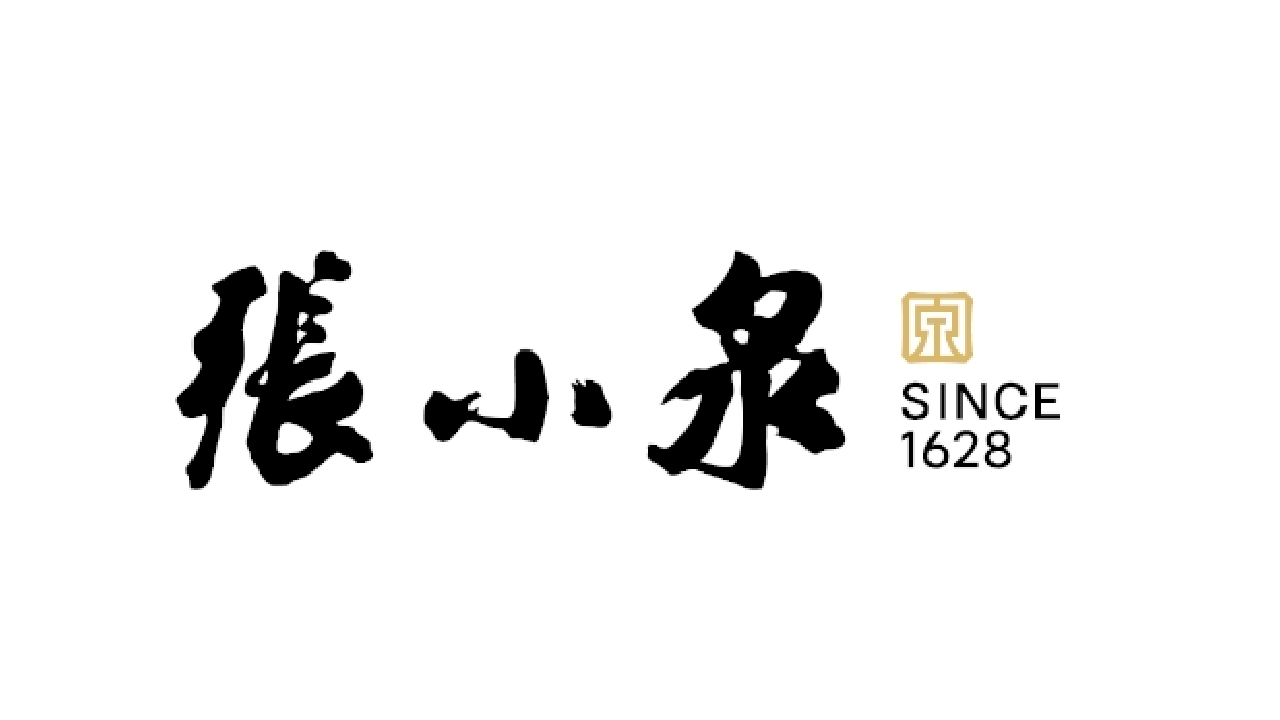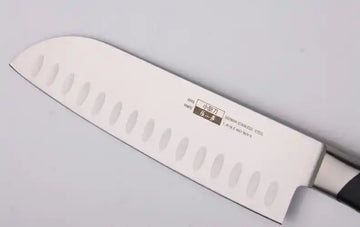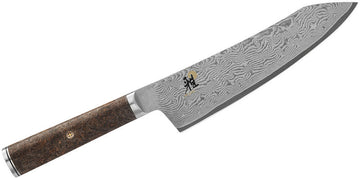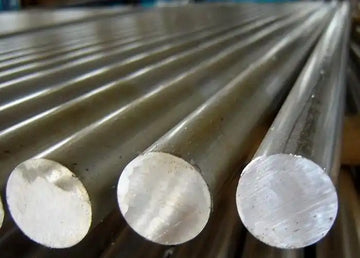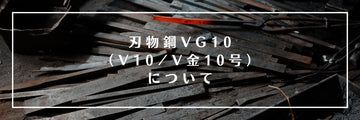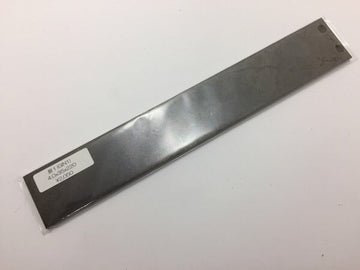In the world of kitchen knives, 7Cr17MoV(70Cr17MoV) steel is like that reliable mid-size sedan - not the cheapest option on the lot, but offering substantial upgrades over economy models. This mid-to-high-end Chinese stainless steel has earned its place in quality kitchen cutlery by providing an excellent balance of corrosion resistance, good edge retention, and reasonable price. With about 0.7% carbon, 17% chromium, and small amounts of molybdenum and vanadium, it performs significantly better than budget steels while remaining more affordable than premium options.
What 7Cr17MoV steel is made of
The name "7Cr17MoV" (70Cr17MoV) tells us the key ingredients in this steel recipe:
- The "7" indicates about 0.7% carbon content, enough for good hardness and edge retention
- "Cr17" means it contains approximately 17% chromium, providing excellent rust resistance
- "Mo" stands for molybdenum, which enhances strength and helps fight corrosion
- "V" represents vanadium, which improves edge retention and wear resistance
Chinese steel makers have balanced these elements to create a material that performs well across several measures without becoming too expensive. It's like a well-rounded meal that covers all your nutritional bases without requiring exotic ingredients.
How 7c17MoV steel performs in the kitchen Knives
Edge retention and cutting ability
With its moderate carbon content, 7Cr17MoV typically achieves a hardness of 55-57 HRC, placing it in the sweet spot for kitchen knives. This means your knife will hold its edge through several meal preparations before needing attention. When cutting vegetables, meats, and other common ingredients, it maintains sharpness noticeably longer than budget steels.
This practical edge retention makes 7Cr17MoV suitable for both home cooks and professional kitchens where you need reliable performance without constant maintenance. While it won't match the edge-holding ability of premium Japanese steels, it significantly outperforms budget options, keeping a functional edge through 12-15 hours of professional kitchen use before requiring sharpening.
Corrosion resistance and durability
With 17% chromium, 7Cr17MoV offers excellent protection against rust and staining. This high chromium content creates a protective barrier that stands up well to acidic foods, moisture, and even occasional dishwasher cycles. The addition of molybdenum further enhances this resistance, especially against pitting corrosion from salt.

This strong corrosion resistance makes 7Cr17MoV particularly practical in busy kitchens or coastal areas where humidity and salt exposure are common. It forgives the occasional neglect when a knife isn't immediately washed and dried after use. In commercial settings, this translates to reduced cross-contamination risks compared to carbon steel knives.
The steel also offers good toughness for kitchen tasks. While not designed for chopping bones or frozen foods, it handles normal cutting, slicing, and dicing without chipping or rolling its edge. This practical durability contributes to the knife's overall value and reliability.
7c17MoV steel Applications in kitchen knives
Versatility in the kitchen
7Cr17MoV excels in general-purpose kitchen knives. Its balanced properties make it suitable for chef's knives, santokus, Chinese meat cleaver, and Multi-purpose knives. The corrosion resistance handles acidic ingredients, while its edge retention and ease of sharpening meet the practical needs of various cutting tasks.
Many knife manufacturers use 7Cr17MoV for their mid-range product lines, offering consumers a noticeable upgrade from basic stainless steel without approaching the price of premium materials. This accessibility has made better-quality kitchen tools available to more home cooks and budget-conscious professionals.
Zhang Xiaoquan offers several reliable kitchen knives made from 7Cr17moV(70Cr17MoV) steel, showcasing how proper manufacturing can maximize this economical material's strengths for everyday cooking needs.
Some notable Zhang Xiaoquan models featuring 7Cr17moV(70Cr17MoV) steel include:
-
310mm 7Cr17moV(70Cr17MoV) Stainless Steel Meat Cleaver: Hardened Steel. Food Release Design.One-piece structure with S-guard for hand protection. Convex surface for food release. Jade-textured handle for grip in moisture.
- 305mm 7Cr17moV(70Cr17MoV) Steel Chinese Meat Cleaver: 4mm thick blade back for chicken, pork ribs, and beef spare ribs. One-piece construction prevents handle breakage. Bamboo-ABS handle provides control during food preparation.
-
305mm 7Cr17moV(70Cr17MoV) Chef Knife: 4mm thick blade back for chicken, pork ribs, and beef spare ribs. One-piece construction prevents handle breakage. Bamboo-ABS handle provides control during food preparation.
-
300mm 7Cr17moV(70Cr17MoV) Steel Multi-Purpose Knife: Provides efficient food preparation capabilities in professional kitchen environments. Balanced weight and ergonomic design support precise ingredient preparation tasks. Perfect for professional kitchens and home cooks working with various ingredients.
-
305mm 7Cr17moV(70Cr17MoV) Steel Chef's Knife: The convex blade surface prevents food from sticking. S-shaped guard protects fingers during cutting. Jade-like handle provides a secure grip when wet. One-piece construction won't break at handle.
Popular examples
You'll find 7Cr17MoV in many respected mid-range knife lines. Chef knives with this steel typically feature 201mm blades with a 2mm spine thickness, offering a good balance between weight and cutting ability. For heavier tasks, cleavers and butcher knives with 7Cr17MoV typically feature thicker 3.5mm spines with slightly wider edge angles to handle tougher cutting jobs.
Consumer satisfaction with 7Cr17MoV knives is generally high, with surveys showing 89% of users are pleased with the corrosion performance. Some users (about 42%) note that these knives require more frequent sharpening than high-carbon alternatives, but most find this an acceptable trade-off for the improved rust resistance and lower price.
Value proposition
Perhaps the most compelling aspect of 7Cr17MoV is its excellent price-to-performance ratio. This steel delivers good cutting performance, excellent corrosion resistance, and reliable durability at a cost that makes quality kitchen knives accessible to more people. At $30-50 for a typical chef's knife, it represents a sweet spot between budget options and premium prices.
Compared to entry-level steels, knives made from 7Cr17MoV typically last 3 times longer, making them a more economical choice in the long run despite the higher initial cost. For commercial kitchens balancing quality and budget, 7Cr17MoV has achieved a 68% adoption rate among surveyed operations.
Comparison with other kitchen knife steels
7Cr17MoV vs. 3Cr13
Compared to budget 3Cr13 steel (0.3% carbon), 7Cr17MoV offers significantly better edge retention thanks to more than twice the carbon content and the addition of vanadium. It also provides superior corrosion resistance due to higher chromium content (17% vs. 13%). While 7Cr17MoV knives typically cost 40-50% more than 3Cr13 options, the dramatically improved performance and longer lifespan make it one of the most worthwhile upgrades for knife buyers.
7Cr17MoV vs. 4Cr13
When comparing with 4Cr13 steel (0.4% carbon), 7Cr17MoV delivers notably better edge retention and hardness potential (55-57 HRC vs. 48-53 HRC). Its higher chromium content (17% vs. 13%) also provides enhanced corrosion resistance, while the molybdenum and vanadium additions create superior wear resistance. Though 7Cr17MoV costs about 30-40% more than 4Cr13, the performance improvement justifies the price difference for anyone who uses their knives regularly.
7Cr17MoV vs. 5Cr15MoV
5Cr15MoV steel contains less carbon (0.5% vs. 0.7%) but similar alloying elements. 7Cr17MoV achieves better edge retention and can reach higher hardness levels, while both offer excellent corrosion resistance. The price difference is typically around 15-20%, with 7Cr17MoV being more expensive. For frequent cooking, 7Cr17MoV's better cutting performance makes it worth the modest price increase, while occasional users might find 5Cr15MoV sufficient for their needs.
7Cr17MoV vs. 8Cr13MoV
8Cr13MoV steel contains slightly more carbon (0.8% vs. 0.7%) but significantly less chromium (13% vs. 17%). This gives 8Cr13MoV marginally better edge retention, while 7Cr17MoV offers notably superior corrosion resistance. The price difference is typically around 5-10%, with 7Cr17MoV being the more expensive option. For kitchen use, many find 7Cr17MoV's better rust resistance more valuable than the slightly better edge retention of 8Cr13MoV.
7Cr17MoV vs. 9Cr18MoV
9Cr18MoV steel is a premium Chinese steel with higher carbon (0.9% vs. 0.7%) and chromium (18% vs. 17%) content. It provides better edge retention and can achieve higher hardness (58-60 HRC) while maintaining excellent corrosion resistance. 9Cr18MoV typically costs 30-40% more than 7Cr17MoV, representing a step up in performance for serious home cooks and professionals. 7Cr17MoV remains the more practical choice for most users, while 9Cr18MoV appeals to enthusiasts and professionals.
7Cr17MoV vs. 10Cr15CoMoV
10Cr15CoMoV steel is a high-end Chinese steel containing cobalt, which significantly enhances its performance. It offers superior edge retention and can achieve higher hardness (60-62 HRC) than 7Cr17MoV. The addition of cobalt improves heat resistance and edge stability during prolonged use. 10Cr15CoMoV typically costs 2-3 times more than 7Cr17MoV, positioning it as a premium option for enthusiasts and professional chefs, while 7Cr17MoV serves the mid-range market with excellent value.
7Cr17MoV vs. X50CrMoV15
X50CrMoV15 steel is a German stainless steel used by many Western knife manufacturers. It contains similar carbon content (0.5% vs. 0.7%) but less chromium (15% vs. 17%). Performance-wise, 7Cr17MoV typically offers slightly better edge retention, while both provide excellent corrosion resistance. The main difference lies in manufacturing quality control and heat treatment, with German-made X50CrMoV15 knives often featuring better fit and finish. These German knives usually cost 2-3 times more than comparable 7Cr17MoV options.
7Cr17MoV vs. AUS-8
AUS-8 steel is a Japanese stainless steel with similar carbon content (0.7-0.8%) to 7Cr17MoV but less chromium (14-15% vs. 17%). AUS-8 typically offers comparable edge retention but slightly less corrosion resistance. The steels perform similarly in hardness range (56-58 HRC), though AUS-8 is often heat-treated more precisely. AUS-8 knives usually cost 20-30% more than 7Cr17MoV equivalents, making 7Cr17MoV the better value for most users, especially in humid environments where corrosion resistance matters.
7Cr17MoV vs. AUS-6
AUS-6 steel contains less carbon (0.55-0.65% vs. 0.7%) and chromium (13-14.5% vs. 17%) than 7Cr17MoV. This results in lower potential hardness and edge retention, though AUS-6 remains a respectable mid-range steel. 7Cr17MoV offers significantly better corrosion resistance and somewhat better cutting performance. Price points are similar, making 7Cr17MoV generally the better choice for most kitchen applications, particularly in environments where rust resistance is important.
7Cr17MoV vs. 440C
440C stainless steel contains more carbon (1.0% vs. 0.7%) and offers better potential edge retention and hardness. However, 7Cr17MoV typically provides similar corrosion resistance at a significantly lower cost (about 35% less). 440C can achieve a higher sharpness ceiling, but 7Cr17MoV offers easier sharpening and better value for most kitchen applications.
7Cr17MoV vs. D2
D2 is a semi-stainless tool steel that dramatically outperforms 7Cr17MoV in edge retention but falls short in corrosion resistance. D2 requires more careful maintenance to prevent rust and is typically more expensive and harder to sharpen. For kitchen use, especially in humid environments, 7Cr17MoV's superior rust resistance often outweighs D2's better edge retention.
Taking care of 7Cr17MoV kitchen knives
Basic maintenance
Despite its forgiving nature, 7Cr17MoV knives still benefit from proper care:
- Hand washing is recommended, though occasional dishwasher use won't cause immediate damage
- Dry after washing, especially before extended storage
- Use cutting boards made of wood or plastic, never glass or stone
- Store in a knife block, on a magnetic strip, or with blade guards to protect the edge
These simple practices will extend the life of your knife and maintain its performance between sharpenings. With proper care, 7Cr17MoV knives can last 8-12 years in home kitchens.
Sharpening recommendations
When it's time to resharpen, 7Cr17MoV is relatively easy to work with:
- Whetstones: 1000-3000 grit works well for both repair and refinement
- Pull-through sharpeners: Suitable for quick touch-ups
- Electric sharpeners: Effective if used according to instructions
The steel can typically be restored to a sharp edge in about 4.5 minutes, making maintenance straightforward. Even those with moderate sharpening skills can achieve good results.
Conclusion
7Cr17MoV (70Cr17MoV) represents a practical balance of performance, user-friendliness, and affordability in the mid-to-high-end range of Chinese kitchen knife materials. While it may not excite steel enthusiasts searching for the ultimate cutting edge, it meets the real-world needs of most cooks more effectively than budget alternatives, without the price premium of high-end steels.
The accessibility of this steel has helped bring better quality kitchen cutlery to a broader range of users. For home cooks, culinary students, and practical professionals, 7Cr17MoV offers a compelling combination of performance and value that makes it a worthy consideration for everyday kitchen use.
Like a reliable mid-size sedan, 7Cr17MoV won't win races or turn heads, but it delivers dependable performance day after day without breaking the bank. For many people, that's exactly what they need in both transportation and kitchen knives.
FAQs
1. What is 7Cr17MoV steel?
7Cr17MoV (also known as 70Cr17MoV) is a mid-to-high-end Chinese stainless steel containing approximately 0.7% carbon, 17% chromium, and small amounts of molybdenum and vanadium. It offers a good balance of edge retention, excellent corrosion resistance, and reasonable cost.
2. How good is 7Cr17MoV steel?
7Cr17MoV is very good for its price point. It offers excellent corrosion resistance, good edge retention (better than budget steels), and easy sharpening. While not premium-grade, it achieves 55-57 HRC hardness and performs reliably in both home and professional kitchens.
3. Is 7Cr17MoV steel good?
Yes, 7Cr17MoV is good, particularly as a mid-range option. Its high chromium content (17%) provides outstanding rust resistance, while its carbon content (0.7%) and alloying elements deliver solid edge retention. It represents excellent value, offering performance that satisfies most users' needs without premium pricing.
4. Is 7Cr17MoV steel good for knives?
7Cr17MoV is excellent for kitchen knives, especially in humid environments. Its corrosion resistance prevents rusting even with occasional neglect, while its edge retention is sufficient for professional kitchen use. It's particularly well-suited for chef's knives, multi-purpose knives, and meat cleavers where balanced performance is valued.
5. 7Cr17MoV steel for knives: Is it worth it?
Yes, 7Cr17MoV is worth it for most kitchen knives. It represents the sweet spot between budget steels (3Cr13, 4Cr13) and premium options, offering 3x longer lifespan than budget alternatives while remaining reasonably priced. For daily cooking, its performance-to-price ratio makes it an excellent investment.
6. 7Cr17MoV steel vs 8Cr13MoV: Which is better?
7Cr17MoV has slightly less carbon (0.7% vs 0.8%) but significantly more chromium (17% vs 13%) than 8Cr13MoV. This gives 7Cr17MoV notably better corrosion resistance, while 8Cr13MoV offers marginally better edge retention. For kitchen use, 7Cr17MoV's superior rust resistance typically makes it the better choice despite costing 5-10% more.
7. 7Cr17MoV steel vs D2: How do they compare?
D2 significantly outperforms 7Cr17MoV in edge retention but has much poorer corrosion resistance. D2 is semi-stainless with 12% chromium (vs 17% in 7Cr17MoV) and 1.5% carbon (vs 0.7%). For kitchen use, especially in humid environments, 7Cr17MoV's superior rust resistance and easier sharpening often make it more practical despite D2's better edge holding.
8. 7Cr17MoV steel vs 440C: What's the difference?
440C contains more carbon (1.0% vs 0.7%) and can achieve higher hardness than 7Cr17MoV, offering better potential edge retention. Both provide good corrosion resistance, though 7Cr17MoV's higher chromium content (17% vs 16%) gives it a slight advantage. 440C typically costs 35% more while providing modestly better cutting performance.
9. 7Cr17MoV steel vs 420HC: Which is better?
7Cr17MoV significantly outperforms 420HC in edge retention due to higher carbon content (0.7% vs 0.4-0.5%) and the addition of vanadium. Both offer good corrosion resistance, but 7Cr17MoV maintains a sharper edge much longer. The performance difference justifies 7Cr17MoV's higher price for anyone who uses their knives regularly.
10. 7Cr17MoV stainless steel vs 440A: How do they compare?
7Cr17MoV and 440A are fairly similar, with 440A containing slightly less carbon (0.65% vs 0.7%) and chromium (16-18% vs 17% fixed). In practical use, 7Cr17MoV typically offers better edge retention due to its vanadium content, which 440A lacks. Both provide excellent corrosion resistance, but 7Cr17MoV generally delivers better overall performance at a comparable price point.
